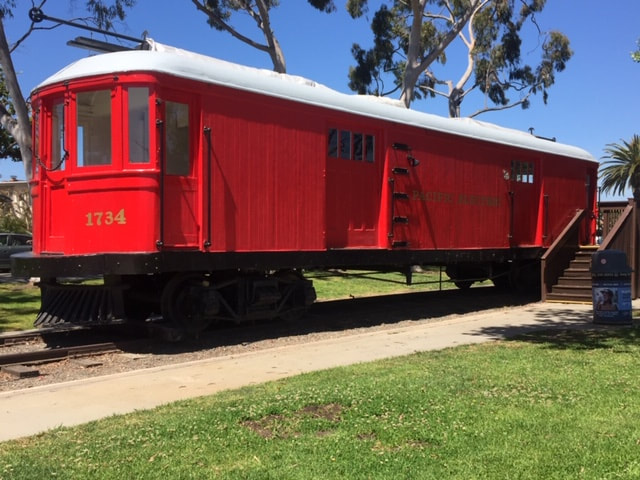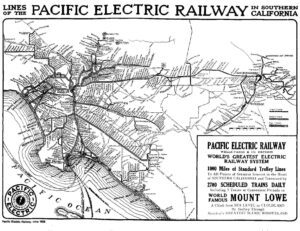
One of the first goals of the Foundation was to put in place a system and process to preserve the Red Car and Centennial House which are both located on the Green belt just east of the Mary Wilson Library.
In 2021, the Seal Beach Lions Club purchased the Red Car Museum from the the Seal Beach Historical Society and have been carrying on the maintenance and repair of the Red Car ever since. In late 2022, the newly formed Seal Beach Historic Resources Foundation came to an agreement with the Seal Beach Lions on the transfer of the Red Car to the Foundation. The transfer is set to take place in April 2023 in a joint ceremony for the entire community.

The Red Car is a daily reminder of the Pacific Electric Railway’s Newport-Balboa Line that used to run from the Willow Street Junction in Long Beach to Anaheim Landing and then along the coast to Newport Beach. The line from Willow Street to Seal Beach, Anaheim Landing and Huntington Beach opened on July 4, 1904. In Long Beach it followed the route of present Appian Way, crossed the Alamitos Bay mudflats on three wooden trestles, then crossed another bridge over the San Gabriel River. In Seal Beach, it proceeded down the middle of Electric Avenue, stopping at 5th Street and then at the Anaheim Landing stop at Bay Blvd. After crossing the the Anaheim Bay inlet, it reached the shore and followed it through Sunset Beach, Huntington Beach and finally ending at Balboa.
The Red Car is not a passenger car, but a tower car used to service and repair the overhead electrical lines. Despite the romance of the old red cars, the passenger lines never turned a profit during the PE’s long history, their main use coming during the hot summer season when inlanders wanted to escape the heat. Ridership became even less after the invention of air conditioning in the later 1920s, and with the growing popularity (and affordability) of automobiles in the 1920s. With declining ridership, the PE reduced the Long Beach to Newport run to a single daily round trip in June 1940 and then fully abandoned the line a few months later on November 18. The need to move growing number of workers during World War II gave the Red Cars a momentary reprieve but after the war service was only seasonal for a few years and then the cars shut down for good in 1950.
What to do with the abandoned rail right-of-way became a major political battle in the 1960s and early 1970s. Some developers proposed using the undeveloped land for more apartments. Others lobbied for additional parking areas. But the town eventually rallied behind funding and constructing a Green Belt.
